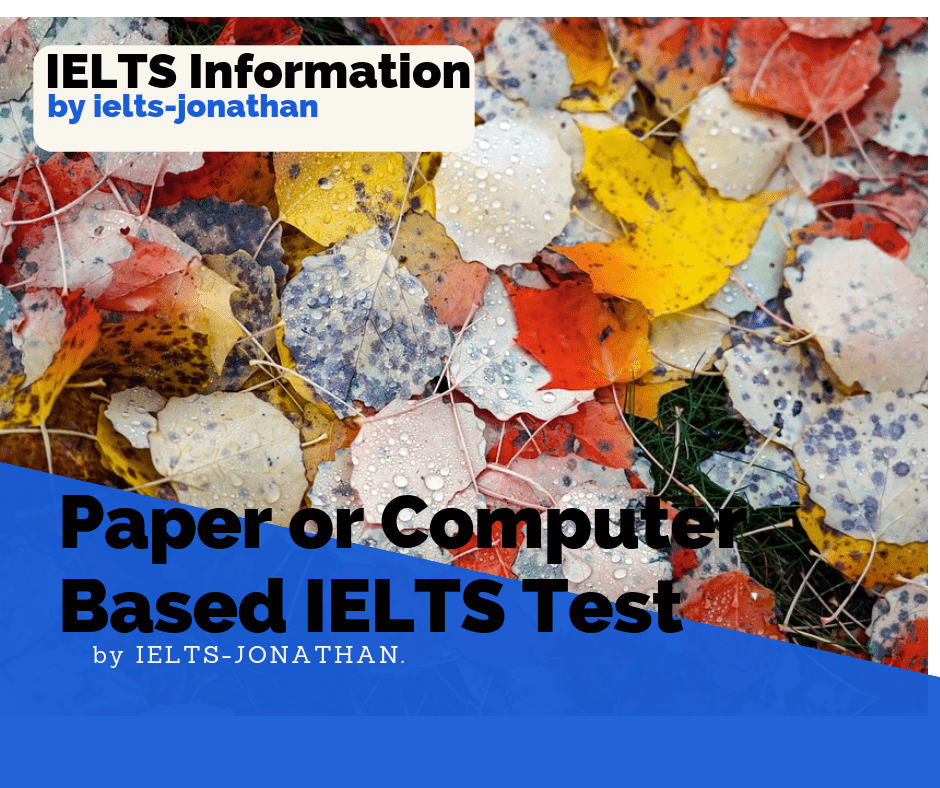New IELTS Computer Based Test
I’ve recently been asked a number of questions about the IELTS Computer Based Test.
As this is a recent development in the test format, I’ve noticed a common theme in misconceptions related to the content, format, difficulty and advantages of this test.
Which is best for you – IELTS on a computer or IELTS on paper ?
While the differences between the IELTS computer-based test and the traditional paper test are the methods in which it is delivered, it is quite possible that the different tests are suitable for different types of candidates.
This post is going to show you aspects of how the Computer Based Writing Section might be better for particular kinds of students.
By looking at the advantages and disadvantages of the computer-based test, you can make an educated decision on which is best for you.
IELTS Computer-Based Test: Reading
While there are obvious benefits for the writing part of the exam when doing the computer based test, it may be that the most obvious drawbacks apply when considering the reading test.
A Different Exam technique
One of the primary techniques in any reading test, that the majority of teachers encourage, is underlining key words, ideas or figures to help students follow, find and link information together.
Most students concerns will be that they are unable to highlight or underline parts of the text as they read.
While you are able to highlight words on the screen and also make notes, I don’t feel that this is the same as being able to do it by hand. If nothing else, it is slower and cumbersome and requires significant motor to eye coordination.
Reading is a different experience.
Reading on a screen is different process to reading on paper.
It might be an experience that students in the 21st Century are more used to.
When using a computer, it is easier to skim and scan as you can can use a mouse or finger to scroll up and down a text quickly.
In fact, much of what we do on a computer is scanning, every time you Google something and search through the results, you are using the reading skill of scanning!
However, a major disadvantage is that when we read from a screen, only a small part of the text is visible, making it more difficult to gain an overview of the general idea of the text.
This might have a negative impact when trying to answer reading questions that test the ability to summarise information, like headings match questions and may require learning new techniques to complete this task.
Is the Computer based test for you?
If you use a screen at work everyday, then you will probably prefer taking the computer based module.
If you wear glasses, find it difficult to focus on one area, or like to read with your arms on the table, then you might want to take the paper-based test.
General Considerations Between the IELTS Computer-Based Test and the Paper Test
- the IELTS computer-based test might be more expensive in your area, for example. in London, it’s around £30 more expensive to sit the computer-based.
- the IELTS computer-based test might not yet be available in your region
- the IELTS computer-based test is more frequently held in some test-centres than the paper test (useful if you have a visa deadline or are applying for PLAB)
- the results of the IELTS computer-based test appear much more quickly (3 – 5 days as opposed to 13 days for the paper-based exam).
So, there we go!
An honest comparison of the IELTS Computer and paper Based test for Reading.
Which is right for you? Computer or Paper?
I’m Jonathan
I’ve taught IELTS and University English in more than a dozen universities and schools around the world.
I’m a parent, traveller and passionate about language teaching and helping students achieve their dreams.
Whilst living in Austria or working in Asia, I run IELTS courses to help students get to where they want to be.
If you are serious about IELTS, connect with me to see how I can help you.




